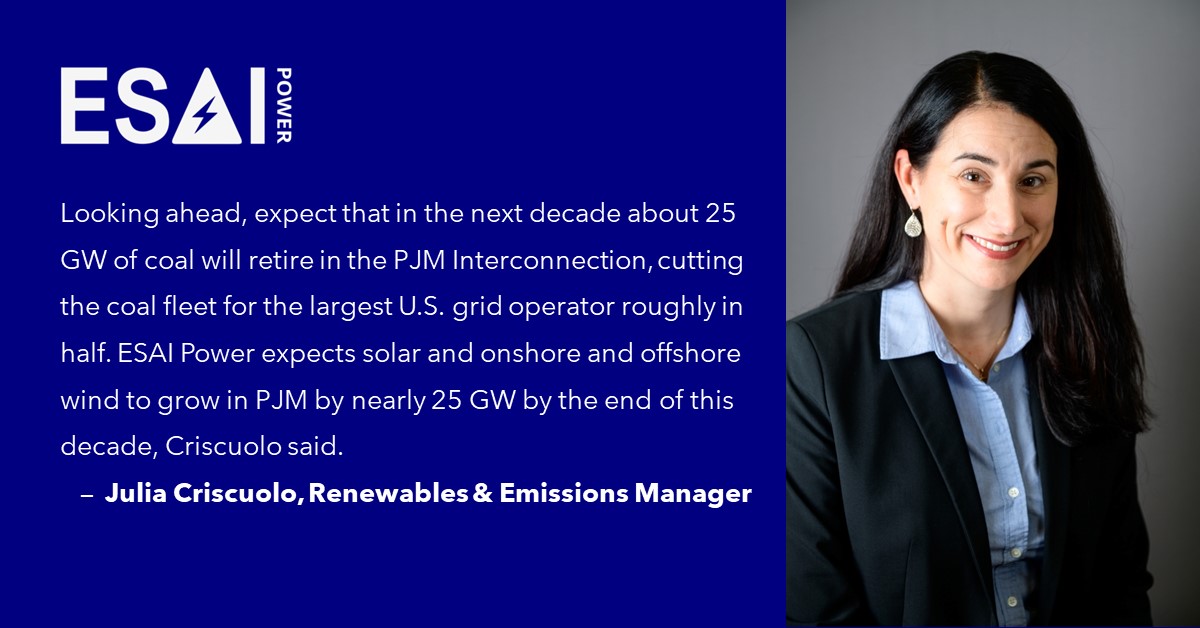Despite Supreme Court Ruling, ESAI Power Expects 25GW of Coal Will Retire in PJM in Next Decade | Emissions News
Ethan Howland reports in Utility Dive that the Supreme Court’s findings in early July that the Environmental Protection Agency cannot use “generation shifting” as envisioned in the Obama administration’s Clean Power Plan. Despite this ruling, ESAI believes that utilities will continue with their plans to shift away from coal-fired power plants to renewables, according several analysts including ESAI Power’s Julia Criscuolo.
Power plant retirement decisions are largely driven by economics, and the relative economic attractiveness of renewables has widened this year given the rapid increase in natural gas, coal and power prices. Existing and pending EPA rules will likely continue to be a major factor in coal plant retirements. Going forward, the EPA will likely look to achieve greenhouse gas reductions as ‘co-benefits’ of several other rules.
Specifically, rules such as the Cross-State Air Pollution Rule (CSAPR) that limit the interstate air transport of NOx and SO2 often lead to a reduction in GHG emissions as well. In fact, earlier this year, the EPA proposed a rule to revise its existing Group 3 Ozone Season CSAPR program and the agency’s own analysis estimates that 18 GW of coal-fired capacity and 4 GW of oil/gas-fired capacity will retire by 2030 as a result of this rule alone. If these retirements take place, significant GHG reductions will occur.
Looking ahead, Julia Criscuolo, Manager of Renewables and Emissions at ESAI Power, expects that in the next decade about 25 GW of coal will retire in the PJM Interconnection, cutting the coal fleet for the largest U.S. grid operator roughly in half. ESAI Power expects solar and onshore and offshore wind to grow in PJM by nearly 25 GW by the end of this decade, Criscuolo said.
The Supreme Court decision does not directly change any of the EPA’s existing policies or regulations that have led to recent coal plant retirement announcements, including its coal ash disposal (CCR) and storage rule. These rules continue to impact coal plants at risk of retirement.
Contact Us
Please contact us for more information about our research product publications or our consulting services.





